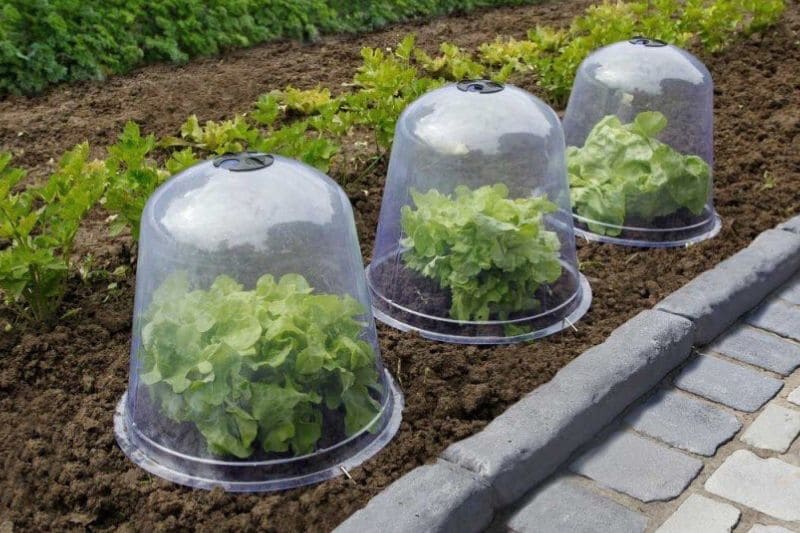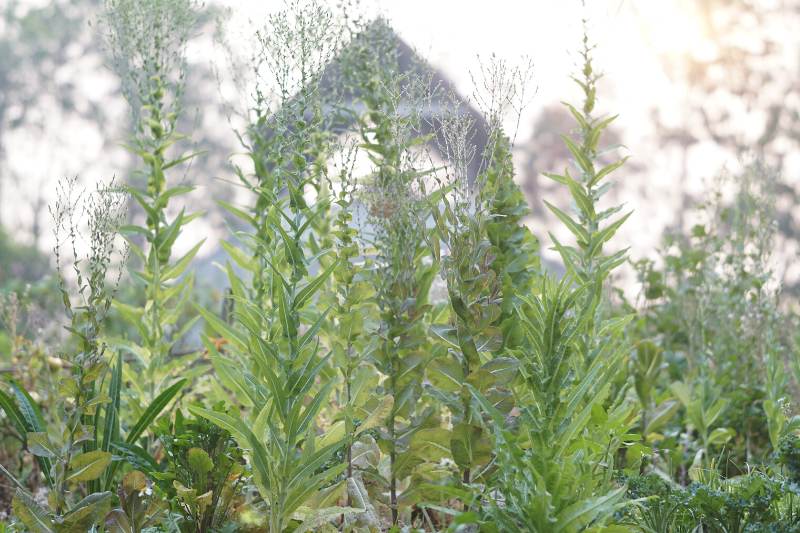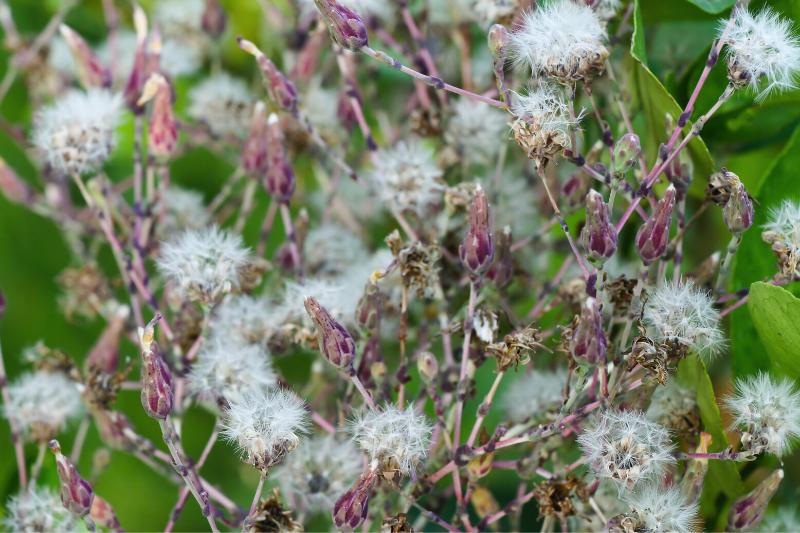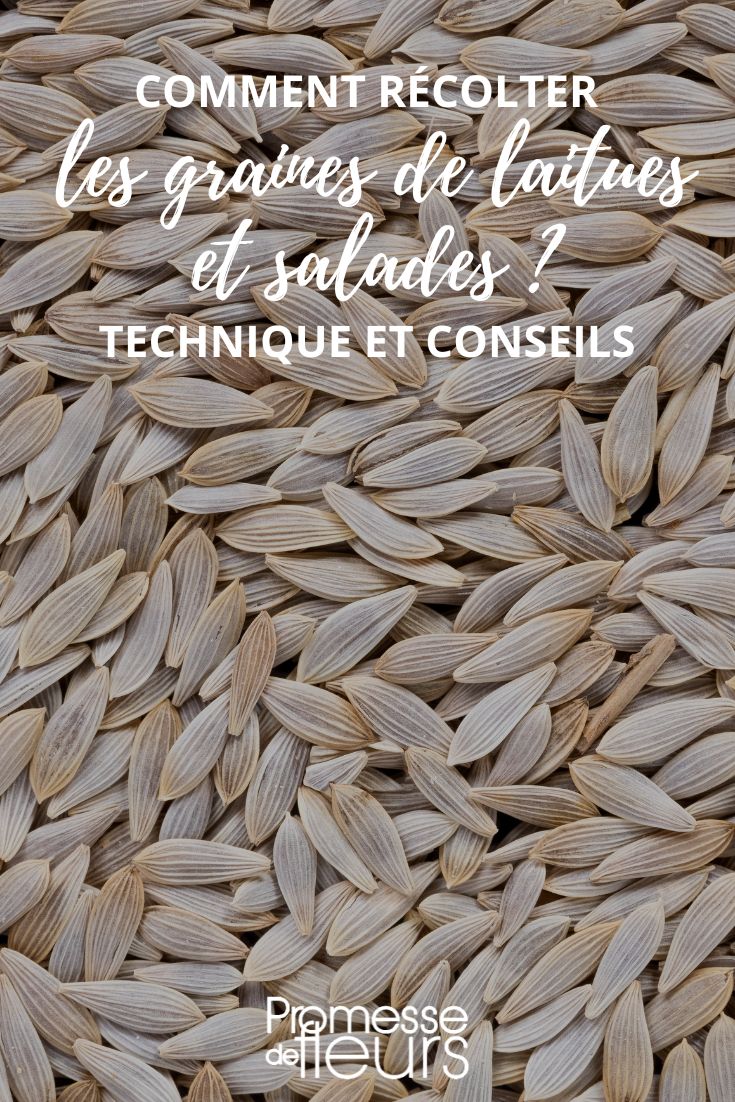If you want to harvest your own seeds in the vegetable garden, there is one vegetable which seed collection is very easy: lettuce! Harvesting your own lettuce seeds allows you to sow them the following year, to obtain healthy plants for planting out or transplanting. But when and how should you harvest? Which lettuce should you select? How should you store the seeds? Follow this tutorial to learn how to harvest your lettuce and salad seeds.

Why saving your own lettuce seeds?
Saving your own seeds obviously saves money, but it is also an enjoyable and very rewarding activity, watching plants grow through a full growth cycle, from seed to plant and from plant to seed. It also allows you to improve your variety by keeping seeds from the best lettuces and thus obtaining salad plants that will adapt to your climate and soil over generations.
You can also give seeds to friends or even swap them with other gardeners at a plant swap.
How to select the right lettuces?
If there is one key step you must not miss to obtain good-quality seeds, it is carefully selecting your lettuce! Here are some essential principles:
1 - Avoid "F1" lettuces
So-called "F1" varieties are hybrids, produced by cross-breeding different cultivars to obtain high productivity or particular resistance. Unfortunately, seeds from those plants do not retain parent qualities and in most cases you will end up with lettuces very different from the original plant, perhaps without a single usable leaf… In short, best to give them a miss.
2- Select the best lettuces
To obtain good lettuces year after year, you must select the best of your lettuces, the biggest, but also the one that bolts least quickly. Indeed, this outstanding plant will pass its qualities to its seeds and thus to next year's plants. Over time this will even improve your variety, which will become better adapted to your climate and soil. Keep this plant in the vegetable garden rather than on the plate!
Conversely, discard spindly lettuces or those that bolt too quickly, as they may give poorer characteristics from one year to the next. This is known as a line "degenerating".
→ Also discover our article: How to naturally improve vegetable garden harvests?

3- Tip: vary varieties or space them out
It is interesting to grow different lettuce varieties in the garden for their flavours and varied leaves. However, if several varieties in your vegetable garden flower at the same time, cross-breeding between species can occur. To avoid this hybridization, either grow different varieties 10 m apart or choose varieties with different flowering times.
Tip: you can also simply stagger sowings by 4 weeks or more between each cultivar.
When to harvest lettuce seeds?
1- according to variety
Each lettuce variety has its own bolting period. For example, winter lettuces will bolt towards late spring, while summer lettuces, such as lettuce 'grosse blonde paresseuse', tolerates summer heat and will bolt later. Generally, the bolting and harvest period runs from May to October.
2- according to plant maturity signs
When your lettuce stretches upwards it will produce small golden-yellow flowers. This is the famous bolting. Depending on weather and variety, the small flowers will then become white tufts (achenes) after 12 to 28 days. When the downy achenes detach at the slightest touch, it's time to harvest the seeds.

3- According to weather
Harvest always at the end of a fine sunny day and in dry weather, to avoid seeds rotting due to excess moisture.
How to harvest the seeds?
There are several methods to harvest seeds, but my favourite for its simplicity is this one:
1- Take an envelope or a kraft paper bag.
2- Place the envelope under the flowers and gently shake the plant. The seeds will fall into your envelope.
Note: seeds from the same lettuce ripen over several days, so do not hesitate to repeat the harvest over a few days.

3- Facultative, but not obligatory: you can sieve the seeds with a fine-mesh strainer to remove debris and white tufts.
4- Then store your seeds.
How to store lettuce seeds?
- Your seeds must be completely dry to keep for a long time.
- Place them in kraft paper, an envelope or an airtight jar.
- Label packet or container with variety and harvest date.
- Store seed packets away from light, ideally in a dark, dry place and, if possible, at cool temperature, such as a healthy cellar.
- Lettuce seeds can be stored for 4 to 5 years depending on storage conditions. Note that seed germination may decline with time.
→ Feel free to browse our articles on storing vegetable seeds and how to know if old seeds are still viable?

A few tips:
- Take care not to water lettuce flowers to avoid wetting developing seeds, which could affect seed quality.
- You can also leave some seeds on flower stems in the garden. Wind-carried seeds will self-sow in the vegetable garden. Resulting plants are generally much more resistant to bad weather, drought and slugs.
To go further
- Discover our full range of lettuces, from seed packet to bucket.
































Comments